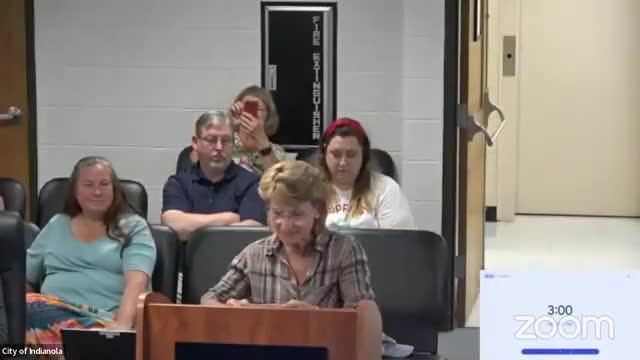Chickens in the city sparks debate over pros and cons
August 20, 2024 | Indianola, Warren County, Iowa

This article was created by AI summarizing key points discussed. AI makes mistakes, so for full details and context, please refer to the video of the full meeting. Please report any errors so we can fix them. Report an error »

During a recent city council meeting, community members voiced their opinions on the pros and cons of keeping chickens in urban areas. Patty Alexander, a hobby chicken farmer with 13 years of experience, shared her insights on the subject, highlighting both the educational benefits and the challenges associated with raising chickens.
Alexander emphasized the positive aspects, noting that children can learn valuable lessons about food production and responsibility through observing and caring for chickens. She pointed out that chickens can help control pests in gardens and contribute to a sustainable lifestyle. However, she also raised concerns about the financial viability of chicken farming, revealing that her family spends approximately $50 a month on feed, yielding only two eggs per day—making the cost nearly a dollar per egg.
The discussion also touched on the logistical challenges of raising chickens, including the requirement to purchase a minimum of five chicks to ensure they thrive as a flock. Alexander warned of potential issues with roosters, which can be difficult to identify until they are several months old, and the risks posed by local wildlife and pets, such as dogs and raccoons, which can threaten the safety of the chickens.
Additionally, Alexander highlighted the practical concerns of chicken waste management, noting that chickens produce a significant amount of droppings, which can complicate waste storage efforts. She concluded her remarks by stating that chickens do not make suitable pets, as they lack the affectionate behaviors commonly associated with traditional pets.
Following Alexander's presentation, another community member, Joe Moody, expressed skepticism about the long-term benefits of allowing chickens in urban settings. He cautioned that chicken coops could become unsightly over time and reiterated the city council's responsibility to maintain neighborhood standards and protect residents' interests.
The discussions reflect a growing interest in urban agriculture and the complexities that come with integrating livestock into city life, raising questions about regulations, community standards, and the balance between personal freedom and public welfare.
Alexander emphasized the positive aspects, noting that children can learn valuable lessons about food production and responsibility through observing and caring for chickens. She pointed out that chickens can help control pests in gardens and contribute to a sustainable lifestyle. However, she also raised concerns about the financial viability of chicken farming, revealing that her family spends approximately $50 a month on feed, yielding only two eggs per day—making the cost nearly a dollar per egg.
The discussion also touched on the logistical challenges of raising chickens, including the requirement to purchase a minimum of five chicks to ensure they thrive as a flock. Alexander warned of potential issues with roosters, which can be difficult to identify until they are several months old, and the risks posed by local wildlife and pets, such as dogs and raccoons, which can threaten the safety of the chickens.
Additionally, Alexander highlighted the practical concerns of chicken waste management, noting that chickens produce a significant amount of droppings, which can complicate waste storage efforts. She concluded her remarks by stating that chickens do not make suitable pets, as they lack the affectionate behaviors commonly associated with traditional pets.
Following Alexander's presentation, another community member, Joe Moody, expressed skepticism about the long-term benefits of allowing chickens in urban settings. He cautioned that chicken coops could become unsightly over time and reiterated the city council's responsibility to maintain neighborhood standards and protect residents' interests.
The discussions reflect a growing interest in urban agriculture and the complexities that come with integrating livestock into city life, raising questions about regulations, community standards, and the balance between personal freedom and public welfare.
View full meeting
This article is based on a recent meeting—watch the full video and explore the complete transcript for deeper insights into the discussion.
View full meeting
